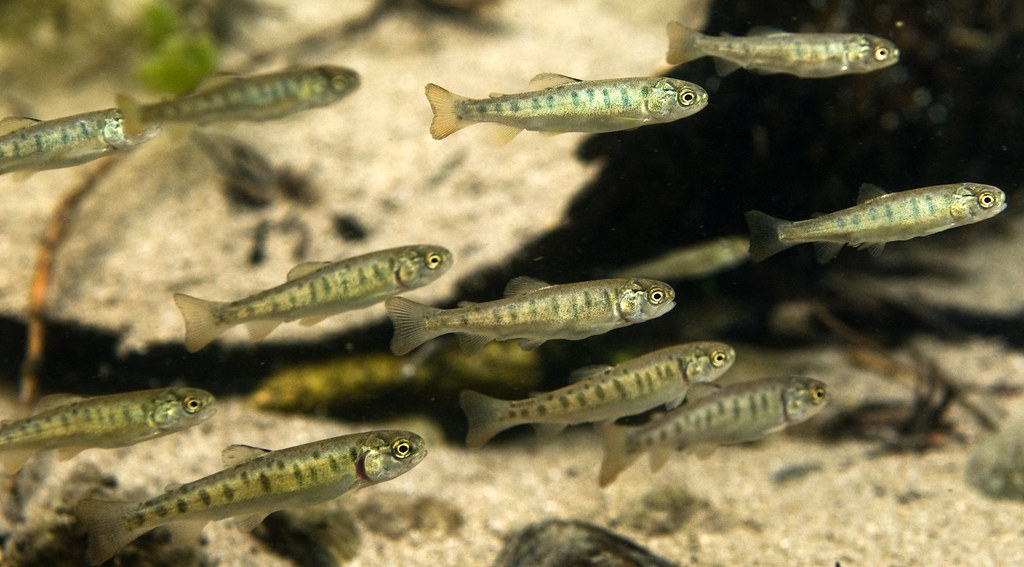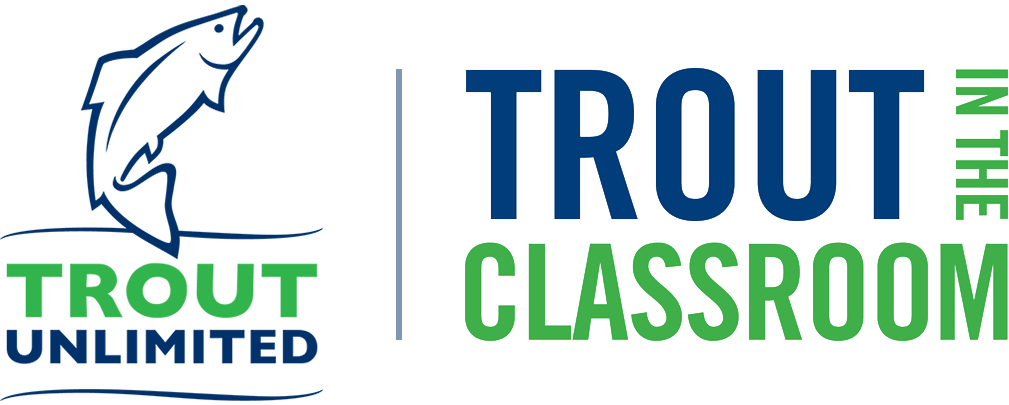Trout feeding tendencies: #
- Surface These trout are a decent size (1.5-2 inches) and seem to be more aggressive. One looks like he had a few “fish dinners”.
- Subsurface Trout eating food as it sinks/drifts to the bottom (our smaller fish who like to stay close to cover)
- Bottom Some of our trout roam the bottom and feed on food nestled between the gravel. Again, these trout tend to be smaller and stay close to cover.
Making the connection: #
- Compare to feeding behaviors in the stream: types of insects/fish they would be eating, where they eat and why
- Compare to recreational fishing techniques: type of equipment (rods, reels) and tackle used (flies, bait, spinners)
Example food comparison: #
- Surface terrestrials (beetles, ants, inch worms), mayflies, stoneflies, caddisflies, midges
- Subsurface nymphs/larvae (stoneflies, mayflies, caddisflies, craneflies, crest bugs, freshwater shrimp
- Bottom nymphs/larvae, sculpins, crest bugs, freshwater shrimp






